How to feel the fear and do it anyway: A series on decision-making
By Imogen Lees - 5 September 2025
7 Min Read
We’ve worked with a whole bunch of business leaders who understand the risks and rewards of moving fast when building digital products. Over the years, it’s become clear that a big part of this undertaking involves making decisions without being 100% sure.
This got us thinking… can we ever be 100% sure? On anything?
And, realistically, how sure do we need to be to make the right decision? What does the right decision even look like?
We decided to investigate the processes and psychology behind decision-making by talking to business leaders about their approach to calling the shots. Going into the research, we had a few preconceptions. We felt that risk-taking was an essential quality for leaders – particularly founders – but we suspected that decision-making can be overwhelming for everyone.
We also understood that getting things wrong is hard and that we naturally try to avoid it. So how do people manage it?
How do we define risk?
The first thing we uncovered is that the way risk is defined and approached varies depending on experience, industry and scale. For example, JP Then, Founder of Slerp and Co-Founder of Crosstown, suggests that defining risk is a whole different world for startups. “There’s a huge element of risk in creating something new. But if you’re trying to solve a problem, you are adding value—which ultimately makes it a less risky move.”
But it’s not just the stage of a business that encourages risk-taking. As Adrian, Founder and MD of Funclub PR, points out: “Risk isn’t always about money - a lot of it is values-based. We’ve turned down about 60-70% of new business leads based on clashing values.”
Defining what risk looks like for your business—and how that differs as you grow—is essential in order to make decisions that keep your business aligned with your strategy and vision. It’s also important to remember why you’re taking risks in the first place. More often than not, risk is moving us towards a tangible improvement.
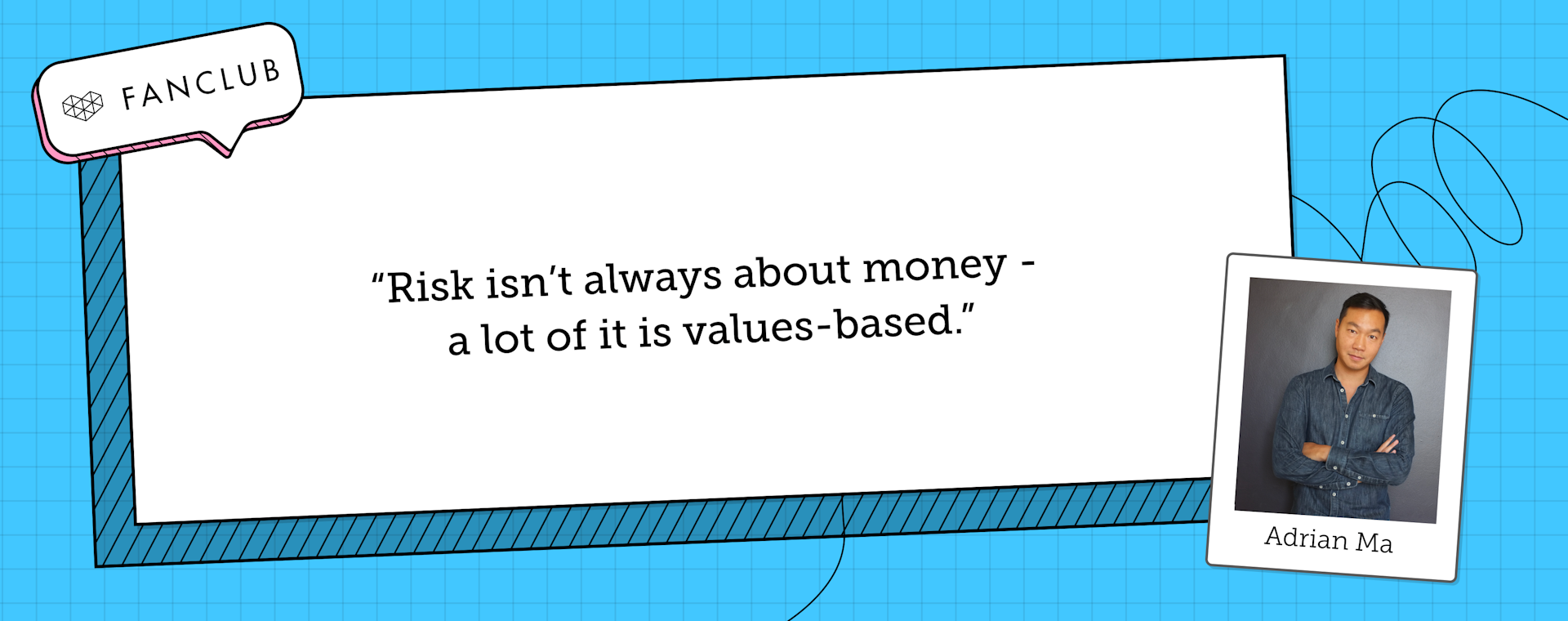
It’s okay to be uncomfortable with risk
If you find risk-taking daunting, you’re not alone. We were secretly relieved to hear that many successful business leaders share the very human traits of doubt and discomfort.
Every leader we asked had an idea of whether they were a risk-taker or not. It seems we have an integral idea of ourselves and our attitude to risk. Emily Cummin, Founder and CEO of Untangle, a tech platform for grief support, admitted that she learned to get used to risk-taking: “though I don’t know if it’s something I’ll ever be fully comfortable with”.
Our research made clear that there are ways of approaching risk to make it feel less intimidating. One is hedging options.
If I’m going into something that’s costing a lot of money, I need to know what the limits are and what the alternative looks like.
Another approach is considering the best and worst-case scenarios and being a worst-case scenario planner. Another is reframing the risk altogether.
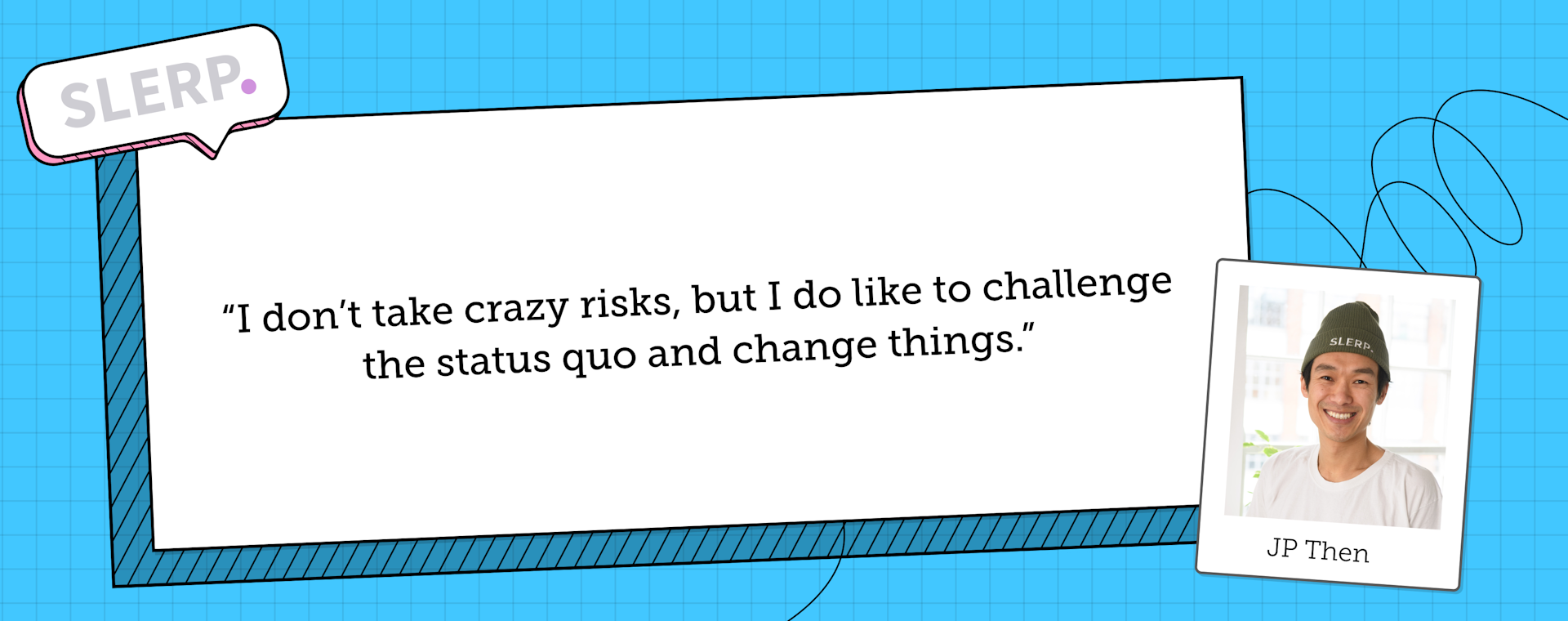
Risk takers and risk mediators: the perfect pairing
There appears to be a sweet spot between taking and mediating risk. 30% of the leaders we spoke to said that within their business there is always a risk taker and a risk mediator.
My business partner often comes up with the big ideas and I’ll figure out how something is actually going to happen. I’ll look at whether risks are worth taking or not. I’m not inherently a risk taker, I’m quite a safe person. So having someone who is more of a risk-taker creates a great balance in our business
If you don’t have a co-partner to mitigate or instigate your risk-taking, you could also try distributing decision-making. As Adrian explained, you can involve your whole team in the process: "Our team acts as a filter before things even get to the board. Our process is straightforward: we have a senior management team where we discuss the pros and cons of taking on new business. The team will then give feedback on whether they think it’s an interesting opportunity".
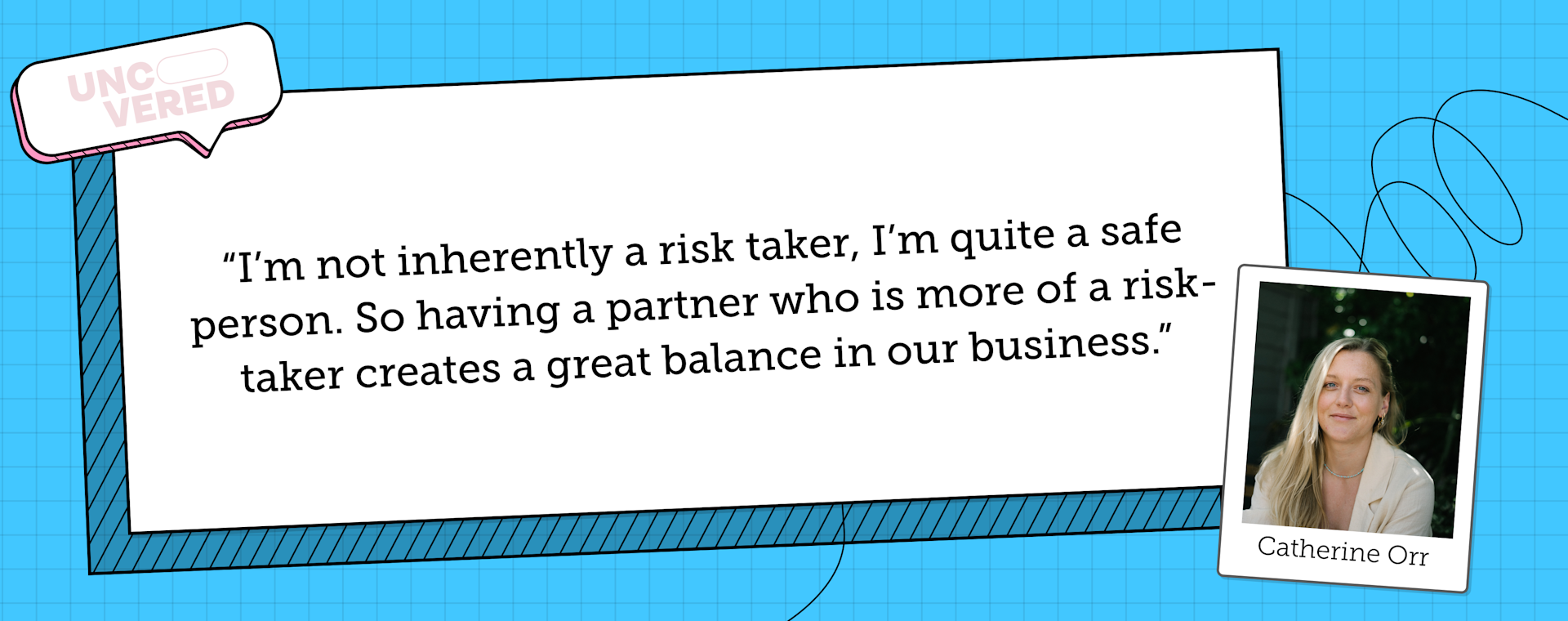
Risk can (and should) be managed
For a business to succeed, decision-makers need to find a way of mitigating the risks they take. Generally, this involves taking practical steps to balance risk and growth, such as prototyping and testing. Every decision-maker that we spoke to referenced the concept of ‘de-risking’ in one way or another.
There’s always a risk that the business could fall apart, but we are hyper-aware of the metrics and we run the business cautiously. We have plans for recession, we don’t overhire, we avoid massive overheads that maybe can’t be sustained–especially if you don’t meet targets. There are lots of small steps you can take to de-risk.
When making a decision, I think it’s important to gather as much feedback as possible ahead of time. Make sure you have the parameters in place to control the controllables. Think about the rollback, not just the rollout. Have a plan for if things don’t go to plan.
Our decisions are often made based on data and learning. A lot of our principles revolve around a 3-month test and learn period. Making safe decisions in some places leaves us open to taking risks in other areas.
De-risking involves making small decisions, prototyping, getting in front of users, having a plan B and doing your research. All these things come from good product thinking.
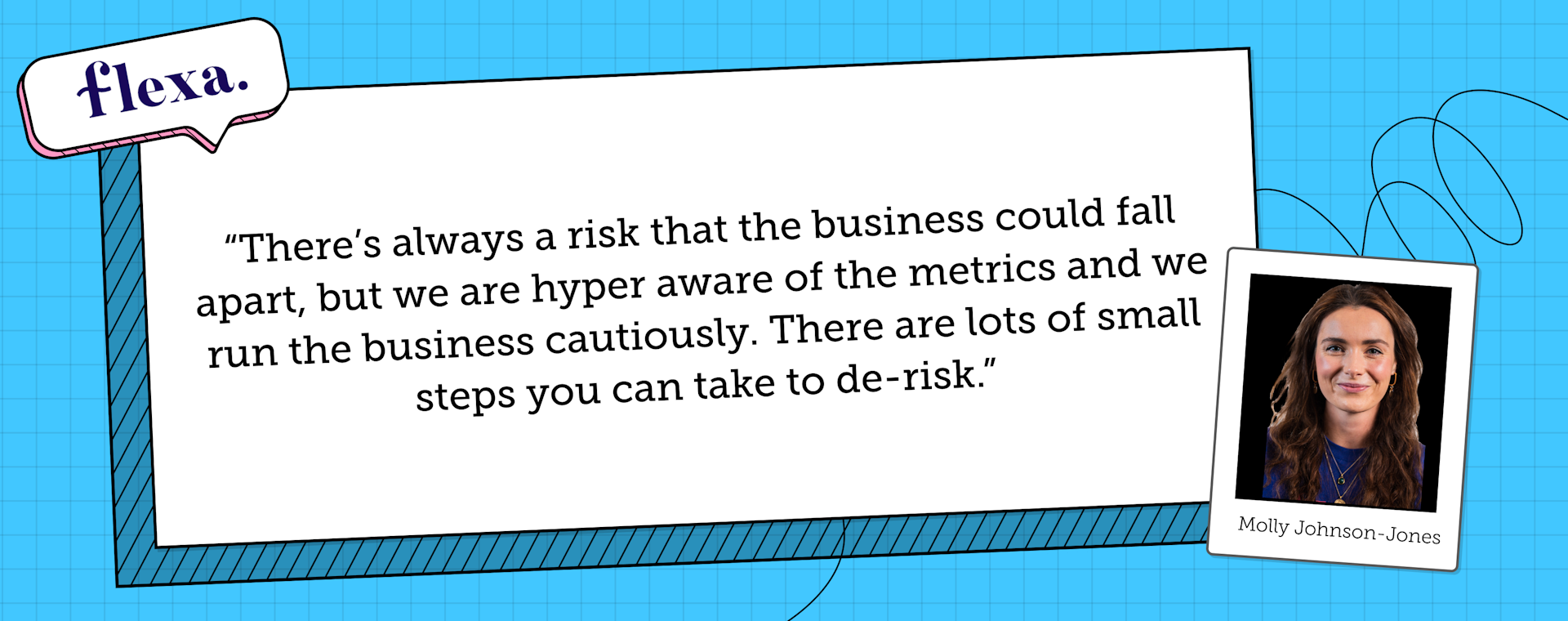
We can change our attitude toward risk
For the most part, taking risks seems to pay off. It’s been both exciting and inspiring to hear about how our interviewees took the plunge in starting their businesses, and continue to hedge their bets on a regular basis.
As Catherine Orr, Co-Founder of Social Transformation Company, Uncovered put it: "As Co-Founders, we’re very opportunistic. Something comes along and we will say yes and give it a go. There have been things we’ve tried that have failed, but we keep moving forwards and keep up the momentum."
Everyone agreed that actually starting a business was the biggest risk. Once you’ve passed that hurdle, it’s possible to hone your approach to risk-taking skills and ultimately change your attitude to risk in general.
I used to be much more methodical in how I thought about things—I’d research until I was 90% sure. I quickly realised that ultimately you’ll still have to take a leap at some point. I go with my gut a lot more now.
For those who aren't starting a business from scratch, a lot of the same principles apply. JP's view is that "when building new tech or products, you have to challenge the status quo and innovate". Even when there's more at stake—a legacy brand or more employees—it's about being "comfortable with risk and making those educated decisions and sizing up the risk profile of what you're doing".
Innovation means change, which comes with risk.
As far as we’re concerned, there’s no one-size-fits-all approach to making the right decision. Instead, we believe in getting comfortable with making mistakes and learning from them.
Risk-taking is very much about mindset, which is something you can change over time. The best way to mitigate risk is through product thinking and taking practical steps to balance growth and risk along the way. After that, it’s about backing yourself, trusting your instinct, and always having a plan B.
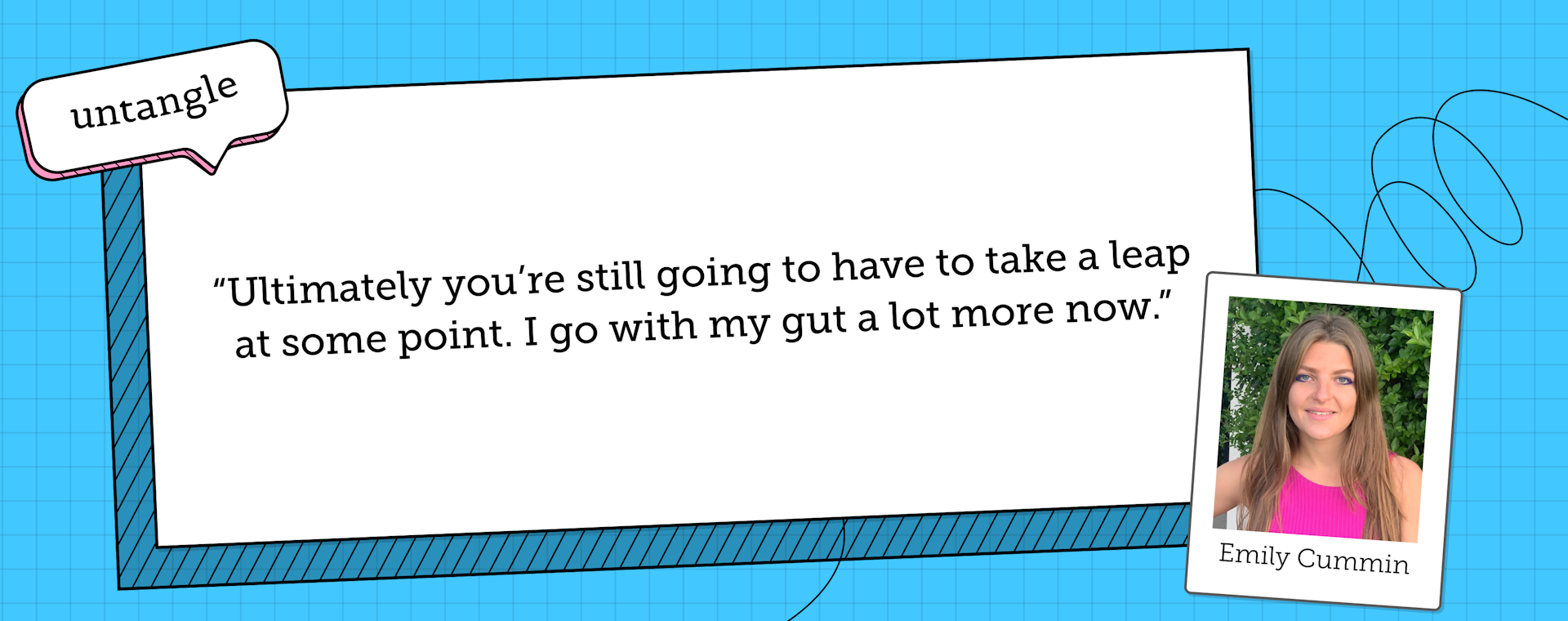
***
This blog is part of our 'How to feel the fear and do it anyway' series.
At Planes, we think it’s impossible to innovate without risk. In this series, we investigate the processes and psychology behind decision-making by talking to leaders about their approach to calling the shots in business. We aim to unpack the messy topic of getting things wrong, explore how error can bolster creativity and share our learnings as we go.